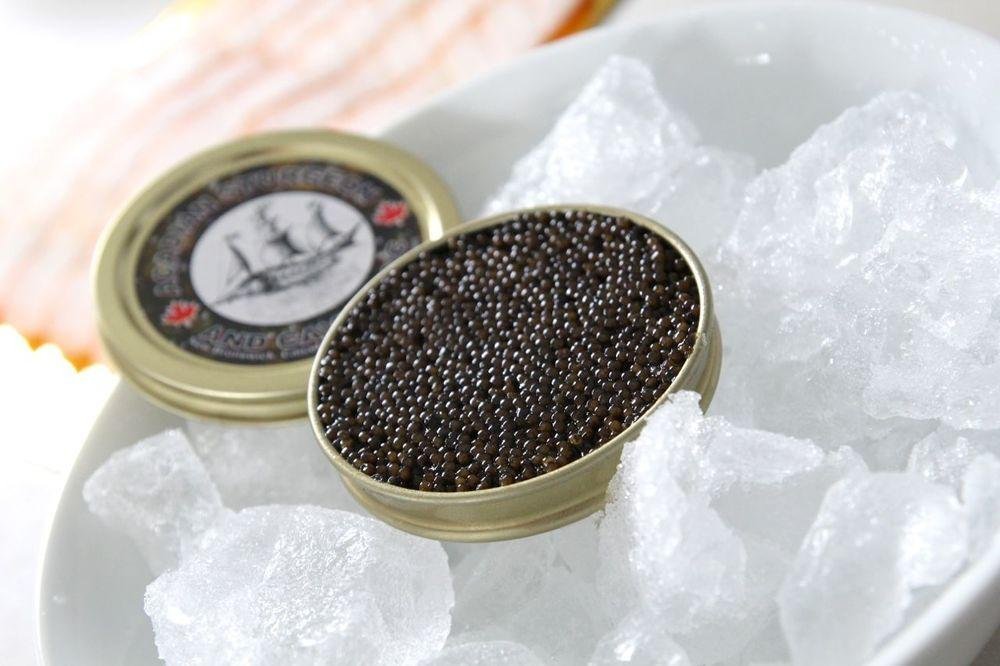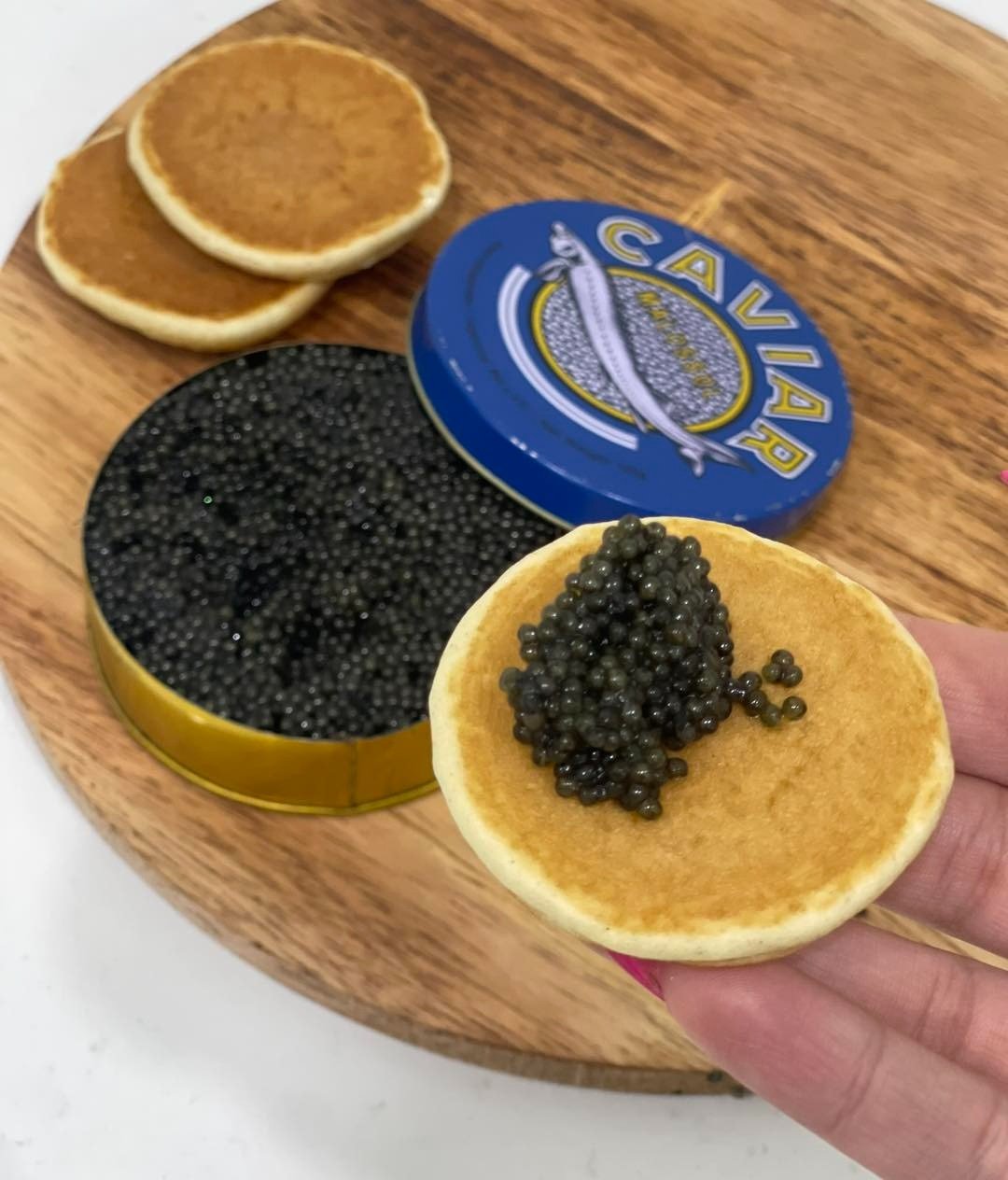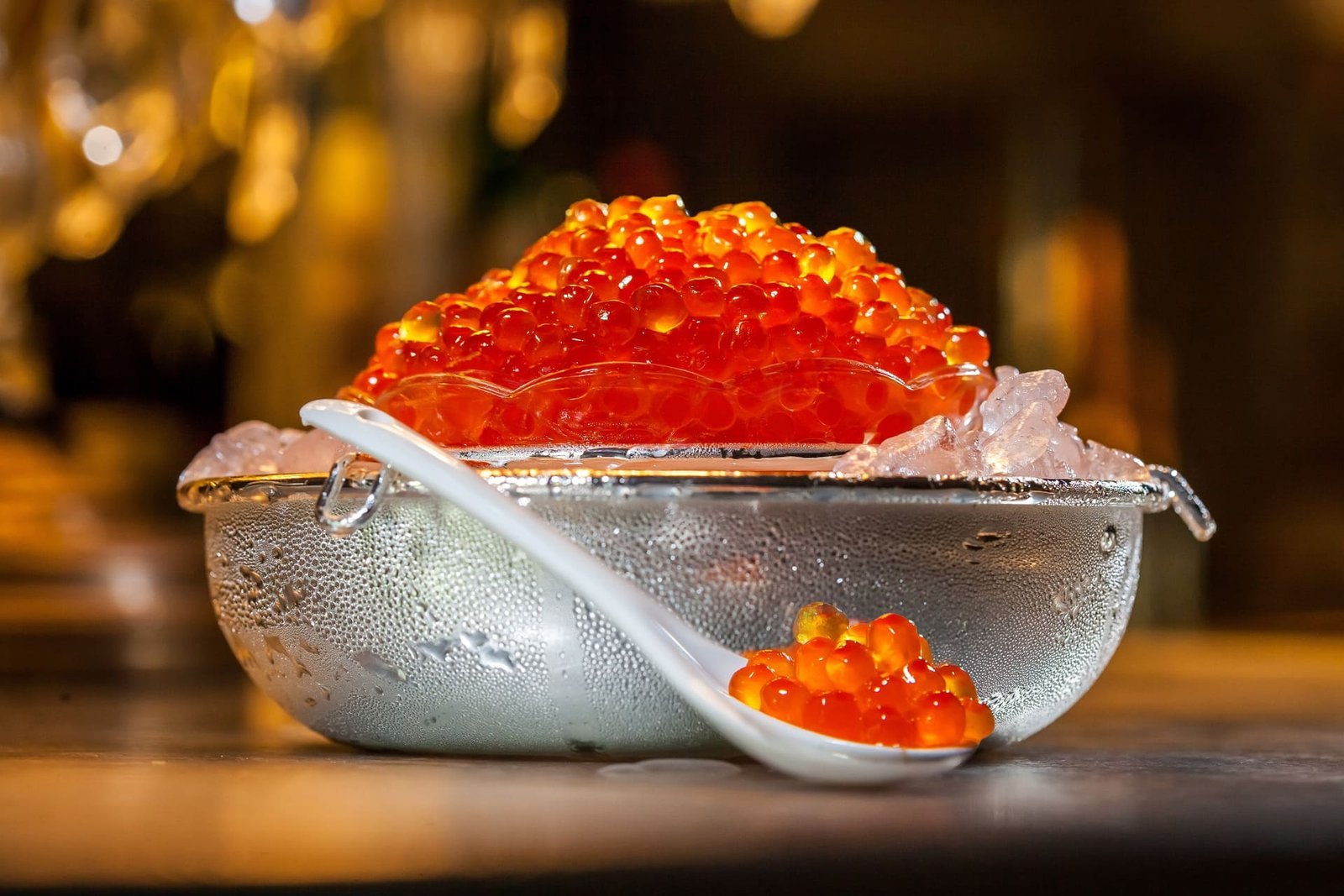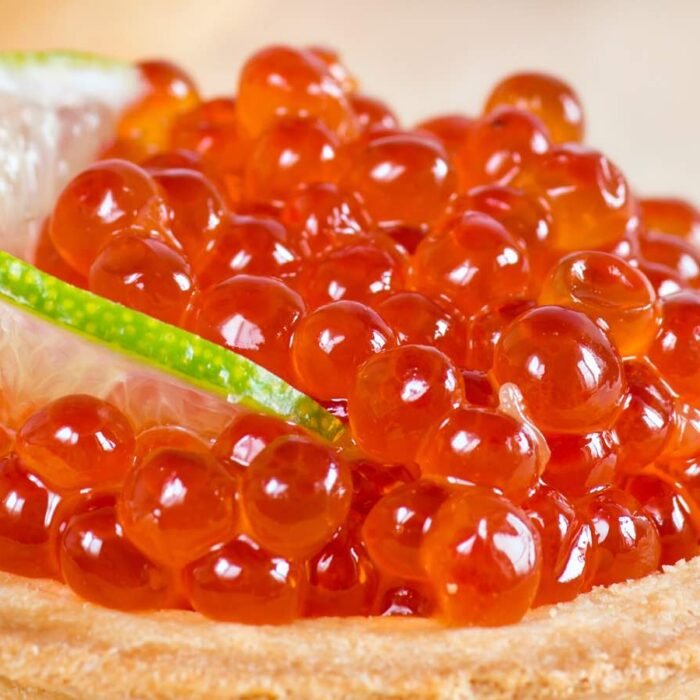About us

Sturgeon Caviar
Black Caviar (also known as caviare, originally from the Persian:
خاویار romanized: kh vy r, lit, ‘egg-bearing’) is a food consisting of
salt-cured roe of the family Acipenseridae. Caviar is considered a
delicacy and is eaten as a garnish or spread.[1] Traditionally, the
term caviar refers only to roe from wild sturgeon in the Caspian
Sea and Black Sea[2] (beluga, ossetra and sevruga caviars). The
term caviar can also describe the roe of other species of sturgeon
or other fish such as paddlefish, salmon, steelhead, trout,
lumpfish, whitefish,[3] or carp.[4]
The roe can be “fresh” (non-pasteurized) or pasteurized, which
reduces its culinary and economic value.[5] caviar online
sturgeon caviar salmon roe caviar

Salmon Caviar
Red caviar is a caviar made from the roe of salmonid fishes
(various species of salmon and trout), which has an intense
reddish hue. It is distinct from black caviar, which is made
from the roe of sturgeon.[1]
Red caviar is part of Russian and Japanese cuisine. In Japan,
salmon caviar is known as ikura (イクラ) which derives from
Russian word ikra (икра) which means caviar or fish roe in
general.[1]
In Japanese cuisine, it is usually marinated in salt or soy sauce
and sake. The seasoning used varies from household to
household. Many families pickle red caviar using only soy
sauce, but some use dashi instead of sake or mirin.[2]
Russians enjoy red caviar appetizers (zakuski) on buttered
bread[3] or on a blini (Slavic crêpes).[4] Caviar on blini may be
paired with sliced salmon and champagne, especially on such
occasions as Russian New Year’s Eve.[5] sturgeon caviar
salmon roe caviar caviar online
Our Partners salmon roe caviar sturgeon caviar caviar online


15+
Years Experience
Customer Satisfaction Is Our Priority
At Fish House USA, we bring the finest selection of specialty seafood and gourmet delicacies to the heart of Lake Forest, Orange County, California. Our passion is simple: delivering top-quality seafood that’s fresh, flavorful, and crafted with care.
WHO WE ARE
A Shop That Prioritizes Your Satisfaction
WHY CHOOSE US
Customer Satisfaction Is Number One For Us
Quality Control
We offer goes through strict quality control to ensure it meets the highest standards—from ocean to table.
Safe Delivery
Your order’s safety is just as important to us as the quality.
Rating 5
Fish House USA is your trusted source for gourmet seafood in Lake Forest and throughout Orange County.
Whether you're a caviar enthusiast, planning a celebration, or simply looking to enjoy something special, you can count on us for unbeatable quality and personalized service. Our team is here to help you find the perfect selection for any occasion.
Proudly serving Orange County and beyond, Fish House USA is where quality meets tradition, and taste meets trust.


Salmon Roe
If you’re looking to buy salmon roe in Orange County, CA, you’ve come to the right place.

Beluga Caviar Hybrid
When it comes to the world’s most luxurious delicacies, few items rival the prestige and allure of Beluga caviar.

Black Caviar
When it comes to fine dining and indulgent ingredients, black caviar stands as the ultimate symbol of culinary prestige.

Bowfin Caviar
Another standout option that deserves attention for its unique flavor, affordability, and versatility: Bowfin Caviar.

Chum Caviar
If you’re a fan of bold seafood flavors and eye-catching presentation, Chum Salmon Roe Caviar deserves a spot in your kitchen.

Gorbusha Caviar
If you're a seafood enthusiast or gourmet food lover in Orange County, California, you've likely come across the rising popularity of Gorbusha caviar.

Hackleback Caviar
If you’re seeking premium caviar with bold flavor and a reasonable price tag, Hackleback caviar should be at the top of your list.

Imperial Amur Caviar
In the world of luxury cuisine, few items evoke as much prestige as Imperial Amur caviar.

Kaluga Royal Caviar
If you’re looking for the epitome of elegance in the world of caviar, Kaluga Royal Caviar stands at the very top.

Keta Caviar
In the diverse world of fine seafood delicacies, Keta Caviar—also known as Chum Salmon Roe

Paddlefish Caviar
When it comes to premium-quality caviar that delivers sophistication without the extreme price tag, Paddlefish Caviar stands out as a stellar option.

Red Caviar
When it comes to luxurious yet approachable seafood, few delicacies are as visually stunning and universally loved as Red Caviar.

Salmon Caviar
For seafood enthusiasts and gourmet chefs alike, Salmon Caviar is a delicacy that’s as flavorful as it is visually stunning.

Sevruga Caviar
Among the most revered delicacies in the world, Sevruga Caviar is celebrated for its fine grains, briny complexity, and silky texture.

Siberian Osetra Caviar
When it comes to caviar, few names command more respect than Osetra—and among its finest varieties is the ethically sourced, richly flavored Siberian Osetra Caviar.

Sterlet Caviar
Caviar has long been a symbol of luxury, refinement, and culinary excellence. Among the rarer types available today is Sterlet Caviar

Sturgeon Caviar
In the world of fine dining and gourmet delicacies, few items command the reverence and prestige of sturgeon caviar.

White Sturgeon Caviar
When it comes to premium caviar that blends traditional luxury with sustainable practices, White Sturgeon Caviar stands as a top-tier choice.
